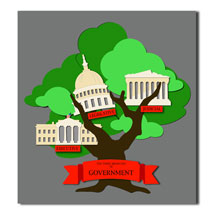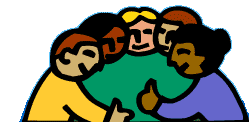|

There are three main branches of government. They are the executive branch, the legislative branch, and the judicial
branch. The executive branch enforces laws created by the legislative branch. Both the president and the vice president are
part of the executive branch. The president acts as chief executive, chief diplomat, chief of state, legislative leader, and
commander in chief. As chief executive, the president carries out the nation's laws. As chief diplomat, the president directs
foreign policy, appoints ambassadors, and negotiates treaties with other nations. As chief of state, the president is a symbolic
representative of the USA. As legislative leader, the president proposes laws to Congress. Lastly, as commander in chief,
the president tells the military where to go. The vice president is the president of the Senate and only votes when there
is a fifty-fifty tie. The legislative branch is in charge of creating the nation's laws. The House of Representatives and
the Senate are part of the legislative branch. The House of Representatives is based on population, creates spending and tax
bills, can impeach federal officials, and checks executives. The Senate makes laws, tries impeached officials, and is made
up of two senators from every state. The judicial branch consists of the Supreme Court and many smaller courts. The Supreme
Court has the power to look over the laws and actions of local, state, and national governments. It also has the power to
cancel these laws if they violate the Constitution. This power is called judicial review. The case of Marbury v. Madison
gave the Supreme Court this power. Constitutional means following the rules and guidelines of the Constitution. If a law is
found to be unconstitutional, the Supreme Court can cancel that law. For example, segregation in schools would be considered
an unconstitutional act. I think all three branches of government share power equally. They all limit each other in some ways.
For example, Congress can't pass a law without the president's consent. The three branches of government also help each other.
They each share equal power so no one branch can become more powerful than the other two branches. The legislative branch
has to answer to the president in the executive branch. But the executive branch carries out the laws created by the legislative
branch. The judicial branch has to work equally with both the executive and legislative branches.
|


